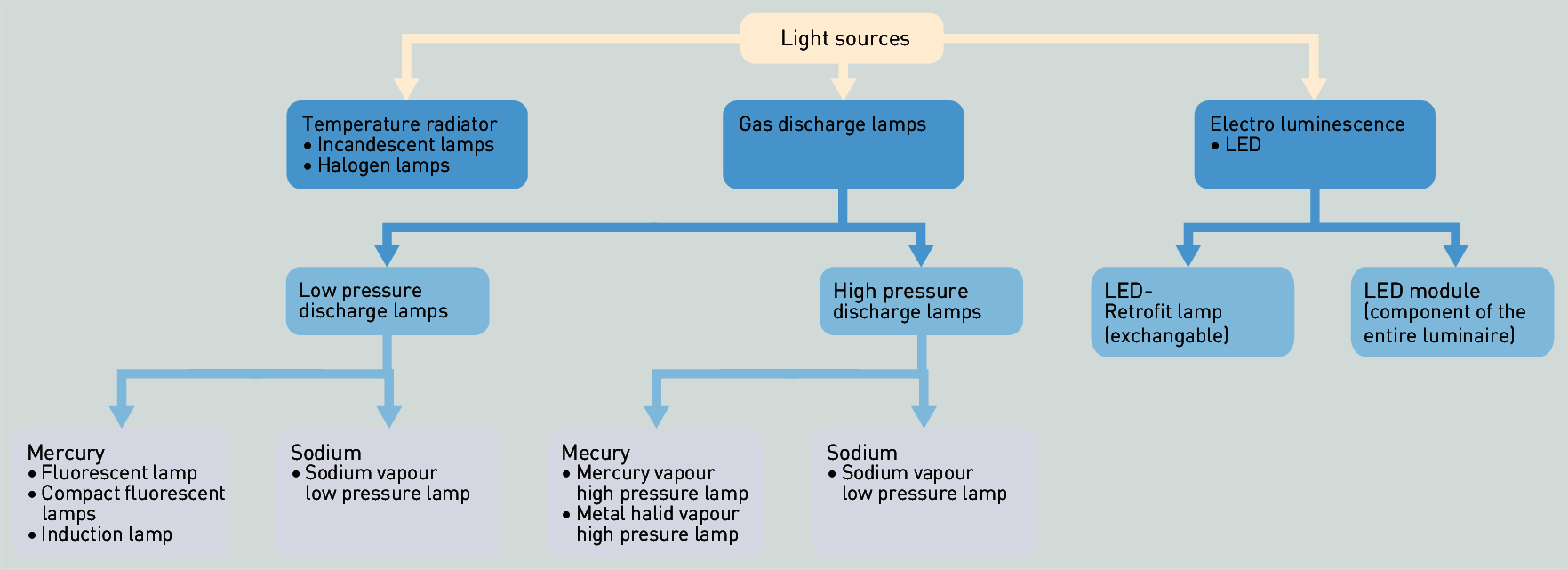The transformation of electrical energy into visible radiation (light generation) takes place in light sources. Basically, there are three different types of such energy transformation, namely light generation
by temperature increase (thermal radiator),
by gas discharge (discharge lamps) and
by electronic procedures in solid state bodies, electroluminescence (LED).
